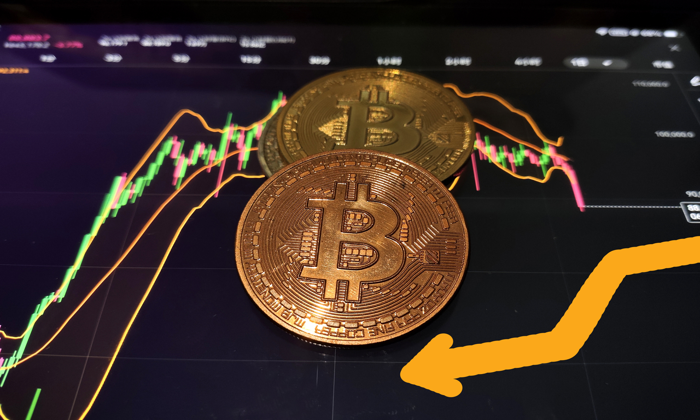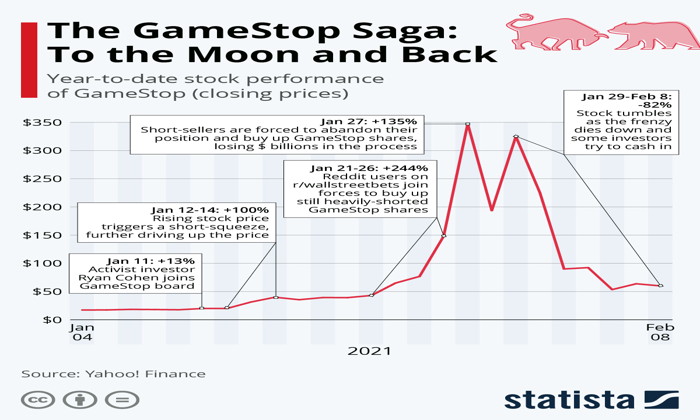First Digital USD (FDUSD) has recently made headlines after losing its dollar peg amidst serious allegations of insolvency against its issuer, First Digital Trust. Tron founder Justin Sun voiced concerns that the Hong Kong-based firm is unable to fulfill client fund redemptions, raising alarm bells in the crypto community. This crisis has sparked widespread FDUSD news, with many calling for regulatory intervention to prevent further repercussions in the stablecoin market. Despite First Digital Trust’s denial of these allegations and its claims of holding a one-to-one backing with U.S. Treasuries, the uncertainty has caused FDUSD to dip significantly, trading as low as $0.95. The developments surrounding FDUSD raise important questions about stablecoin insolvency and the broader implications for Binance stablecoins, as the crypto exchange has relied heavily on FDUSD since dropping support for BUSD.
In the ever-evolving world of cryptocurrencies, the recent turmoil surrounding First Digital USD is a quintessential example of the challenges that stablecoins face. Known for its significant presence in the market, FDUSD’s instability has ignited discussions about the reliability of digital currencies that claim to be pegged to traditional assets. With Justin Sun’s serious allegations against its custodian, First Digital Trust, the unfolding narrative has left investors on edge, questioning the overall trust in the mechanism that backs various stablecoins. As the market grapples with these allegations of insolvency, stakeholders are revisiting the essential framework that supports digital assets like FDUSD. This situation not only highlights the vulnerabilities of First Digital Trust but also reflects larger concerns affecting the entire landscape of cryptocurrency and its regulatory environment.
The Rise and Challenges of First Digital USD (FDUSD)
First Digital USD (FDUSD) emerged as a significant player in the stablecoin arena, especially after the turbulent events surrounding major stablecoins like BUSD. The stability and backing of FDUSD by U.S. Treasuries provided a semblance of security for investors and traders, particularly on platforms such as Binance, which is known for its vast trading volume. With a market cap of $2.5 billion, FDUSD was seen as a reliable option for maintaining a dollar peg, even amidst a crowded market of competing stablecoins.
However, the recent allegations by Tron founder Justin Sun regarding First Digital Trust’s alleged insolvency have caused serious concerns among investors and regulators alike. Sun’s claims suggested that FDUSD was losing its dollar peg due to the issuer’s inability to meet client fund redemptions. This uncertainty raised questions about the overall stability of First Digital USD and its future viability as a trusted stablecoin in the crypto landscape.
Justin Sun’s Allegations and Their Impact
The remarks made by Justin Sun concerning First Digital Trust have not only stirred up controversy but have also prompted a deeper examination of the infrastructure supporting stablecoins like FDUSD. By calling for immediate action from regulators, Sun highlighted the potential ripple effects that these alleged insolvencies could have on the broader cryptocurrency market, particularly for users heavily invested in Binance stablecoins. The crypto community has responded with caution, fearing that if First Digital Trust is indeed in trouble, it could lead to widespread panic and instability in the already volatile market.
In response to these claims, First Digital Trust has firmly denied any insolvency claims, framing them as unfounded attacks rather than genuine concerns. They emphasize that their reserves are intact and that legal measures will be taken against those who propagate misinformation. Nonetheless, the situation raises important questions about transparency and trustworthiness in the stablecoin space, areas where consumers seek assurance amidst the ongoing complexities of crypto finance.
The Consequences of Stablecoin Insolvency
Insolvency within any issuer of a stablecoin, such as First Digital Trust, poses significant risks not only to the entity itself but to the entire ecosystem surrounding cryptocurrencies. Stablecoins are pivotal for users who rely on them for trading, investment, and liquidity. The fears surrounding FDUSD’s solvency could lead to a broader loss of confidence in other cryptocurrencies and stablecoins, creating a cascading effect of panic and withdrawal from these financial products.
The implications of potential stablecoin insolvencies extend beyond market sentiment—they challenge regulators to ensure that users can trust the monetary systems they engage with. As a response to these ongoing issues, the conversation surrounding regulatory frameworks for stablecoins has gained urgency. Understanding the mechanisms that sustain stablecoins and ensuring they are robust enough to withstand financial scrutiny is crucial to preventing future incidents.
Legal and Regulatory Futures for Stablecoins
As the situation with First Digital USD (FDUSD) unfolds, one crucial point of interest is the legal landscape concerning stablecoins. Regulatory bodies are observing the allegations against First Digital Trust with keen interest, as the outcomes may set important precedents for how financial authorities govern these assets. With Justin Sun calling for accountability, it is likely that there will be increased pressure on regulators to establish clearer frameworks and guidelines for stablecoin issuers, particularly regarding their solvency and reserve management practices.
Legal ramifications could also follow if allegations of insolvency are proven true. The potential for lawsuits and further investigations by financial authorities may reshape how companies like First Digital Trust operate. These developments could reinforce the need for comprehensive disclosure and transparency measures in the cryptocurrency market, ensuring that investors are better informed about the stability and reliability of the stablecoins they choose to engage with.
User Reactions and Market Behaviour
The troubling claims regarding First Digital USD (FDUSD) have triggered mixed reactions from users across the cryptocurrency landscape, especially those engaging with Binance stablecoins. Many investors are scrutinizing the news closely, contemplating whether to divest from FDUSD or expand their portfolios into alternative stablecoins that promise more stability and transparency. As the market reacts to these developments, fluctuating prices and trading volumes have reflected the heightened uncertainty among investors.
Amidst the controversy, some users are reiterating the significance of diversification in their crypto investments. With FDUSD’s claims surrounding insolvency looming large, traders are seeking more reliable avenues and may turn towards stablecoins with a proven track record of stability and governance. Such shifts in consumer behavior highlight the importance of trust in financial systems, particularly in a market notorious for its volatility.
First Digital Trust’s Defense and Future Outlook
First Digital Trust has taken a strong stance to defend its reputation against the recent allegations of insolvency. By asserting that their stablecoin is backed one-to-one by U.S. Treasuries, they aim to reassure investors of their financial health and capability to meet redemption requests. Their planned legal action against detractors reflects their commitment to maintaining a strong presence in the stablecoin market, despite external pressures that threaten its perception.
Looking ahead, First Digital Trust’s response to these controversies will be crucial in determining FDUSD’s place within the complex ecosystem of stablecoins. If the firm can successfully address these concerns while proving its solvency and operational integrity, it may emerge with enhanced credibility. However, the path forward will require ongoing commitment to transparency, communication with regulators, and engagement with the crypto community to restore trust.
Effects of FDUSD on Binance and Broader Crypto Market
The issues surrounding First Digital USD (FDUSD) have profound implications for Binance, as the exchange has historically favored FDUSD over other stablecoins. With Binance holding approximately 94% of FDUSD circulating supply, any instability affecting this stablecoin also affects user confidence in the exchange itself. Concerns over FDUSD’s peg could result in users withdrawing funds or shifting to alternate stablecoin options, straining Binance’s market position and liquidity.
Moreover, the potential fallout from FDUSD’s troubles could ripple through the broader cryptocurrency market, influencing trading volumes and user sentiments. If traders start losing faith in Binance and FDUSD, they may become more hesitant to invest in crypto markets overall, leading to decreased prices and reduced market participation. The relationship between stablecoins and major exchanges necessitates a keen understanding of how trust can influence market dynamics, especially in stressful situations.
The Importance of Transparency and Consumer Trust
In the world of cryptocurrencies, transparency and consumer trust hold paramount importance as they forge the foundations of stablecoin operations. As seen with the allegations against First Digital Trust, any lack of clarity can lead to significant upheaval, illustrating that users demand accountability from issuers. The ongoing debate emphasizes the need for standard disclosure practices to ensure users can make informed decisions based on the financial health of stablecoin issuers.
The potential introduction of regulatory frameworks aimed at enhancing transparency within stablecoin markets could serve to protect consumers while fostering trust. Trust is a prerequisite for sustaining long-term investments in any financial ecosystem, and the developments surrounding FDUSD highlight the critical role that reliable communication and transparent operations play in cultivating and maintaining that trust among users.
Navigating the Future of Stablecoins Amidst Uncertainty
As the volatile nature of the cryptocurrency market continues to evolve, stablecoins like First Digital USD are navigating through challenges that could define their futures. With regulators and industry leaders calling for greater accountability, the upcoming months could see significant changes in how stablecoins are structured, monitored, and utilized. Investors and users alike will need to remain vigilant, keeping an eye on developments that may signal broader shifts within the crypto economy.
While uncertainty surrounds certain stablecoins, this moment also presents an opportunity for innovation. New frameworks for stability and trust could emerge from turmoil, fostering a landscape where investors can engage with confidence. Institutions might implement advanced technologies and regulatory compliance mechanisms that solidify the foundations of cryptocurrency transactions, ensuring that stablecoins remain viable options for a variety of financial activities.
Frequently Asked Questions
What caused First Digital USD (FDUSD) to lose its dollar peg recently?
First Digital USD (FDUSD) lost its dollar peg after Tron founder Justin Sun alleged that its issuer, First Digital Trust, is effectively insolvent and unable to fulfill client fund redemptions. This situation sparked concerns about the stability of the stablecoin.
How did Justin Sun’s allegations affect the value of FDUSD?
Following Justin Sun’s allegations regarding the insolvency of First Digital Trust, FDUSD’s value dropped below its dollar peg, plunging to as low as $0.95. The stablecoin was previously trading around $0.97 before the situation escalated.
What is First Digital Trust’s response to Justin Sun’s allegations?
First Digital Trust denied Justin Sun’s allegations, claiming that FDUSD is backed one-to-one with U.S. Treasuries. The company described Sun’s statements as a smear campaign and announced plans to pursue legal action to defend its reputation.
What are the implications of First Digital Trust’s alleged insolvency for FDUSD users?
If First Digital Trust is indeed insolvent, it could severely impact FDUSD users, especially if the company is unable to honor redemption requests. This could lead to significant losses for individuals and businesses relying on the stablecoin.
How does FDUSD compare to other stablecoins like Binance’s BUSD?
FDUSD was notably used after Binance chose to drop support for BUSD in 2023. The current turmoil surrounding FDUSD raises concerns about its stability when compared to other stablecoins, impacting its acceptance and usage on platforms like Binance.
What is the relationship between First Digital Trust and TrueUSD?
First Digital Trust manages the reserves for TrueUSD, which has also faced challenges recently. Allegations suggest that during a redemption crisis, funds intended for Techteryx from TrueUSD reserves were mishandled.
Why is FDUSD’s stability critical for the crypto market?
FDUSD’s stability is essential due to its prominence on major exchanges like Binance, where it represents a significant portion of trading volume. A loss of confidence in FDUSD could lead to broader instability in the crypto market.
What should FDUSD holders do in light of the recent news and allegations?
FDUSD holders should stay informed about the situation and consider their options, particularly in light of potential insolvency issues raised by Justin Sun. It may be prudent to monitor updates from First Digital Trust and regulatory announcements.
| Key Point | Detail |
|---|---|
| First Digital USD (FDUSD) Peg Issue | Lost its dollar peg on Wednesday after allegations of issuer insolvency by Justin Sun. |
| Allegations of Insolvency | Justin Sun claimed that First Digital Trust is unable to fulfill client fund redemptions. |
| Denial from First Digital Trust | First Digital Trust denied the insolvency claims, asserting their stablecoin is backed by U.S. Treasuries. |
| Stablecoin Performance | FDUSD dropped to $0.95 before recovering slightly to around $0.97. |
| History with TrueUSD | Techteryx, associated with Sun, had issues retrieving funds from First Digital Trust, leading to claims of misappropriated funds. |
| Market Impact | Despite a small market cap, the disruptions with FDUSD have been significant for crypto trading, especially on Binance. |
Summary
First Digital USD (FDUSD) has recently faced significant challenges that led to its loss of peg to the dollar due to severe allegations of insolvency against its issuer, First Digital Trust. This situation has raised alarms among stakeholders in the cryptocurrency market, underscoring the importance of transparency and reliability in stablecoin operations. The ongoing developments indicate a crucial moment for stability and trust in the cryptocurrency ecosystem, particularly for prominent stablecoins like FDUSD.
First Digital USD (FDUSD) has recently captured headlines as it lost its crucial dollar peg, following allegations from Tron founder Justin Sun that its issuer, First Digital Trust, is on the verge of insolvency. This has sparked concerns among cryptocurrency investors regarding stablecoin insolvency, especially since FDUSD is a prominent player used by major exchanges like Binance. In a dramatic post on X, Sun urged regulators to take swift action to mitigate further risks to users and partners. While First Digital Trust has dismissed these claims, asserting that its $2.5 billion worth of FDUSD is fully backed by U.S. Treasuries, the situation remains tense. The fallout from these allegations could have significant implications for the future of FDUSD, alongside wider market ramifications for stablecoins and confidence in platforms like Binance.
The recent turbulence surrounding the First Digital USD stablecoin highlights the challenges facing digital currencies in maintaining stability amid allegations of financial mismanagement. This situation has unfolded with key figures like Justin Sun amplifying concerns about the solvency of the issuing entity, First Digital Trust. As discussions of insolvency and regulatory scrutiny intensify, the implications of these events extend far beyond FDUSD, impacting the broader stablecoin market and investor confidence. In light of stablecoins’ reliance on trust and transparency, the unfolding events pose critical questions about the sustainability of digital currencies on various platforms, including Binance. With every new development in the FDUSD saga, the crypto community watches closely, aware that the repercussions could reshape the landscape of stablecoins.














